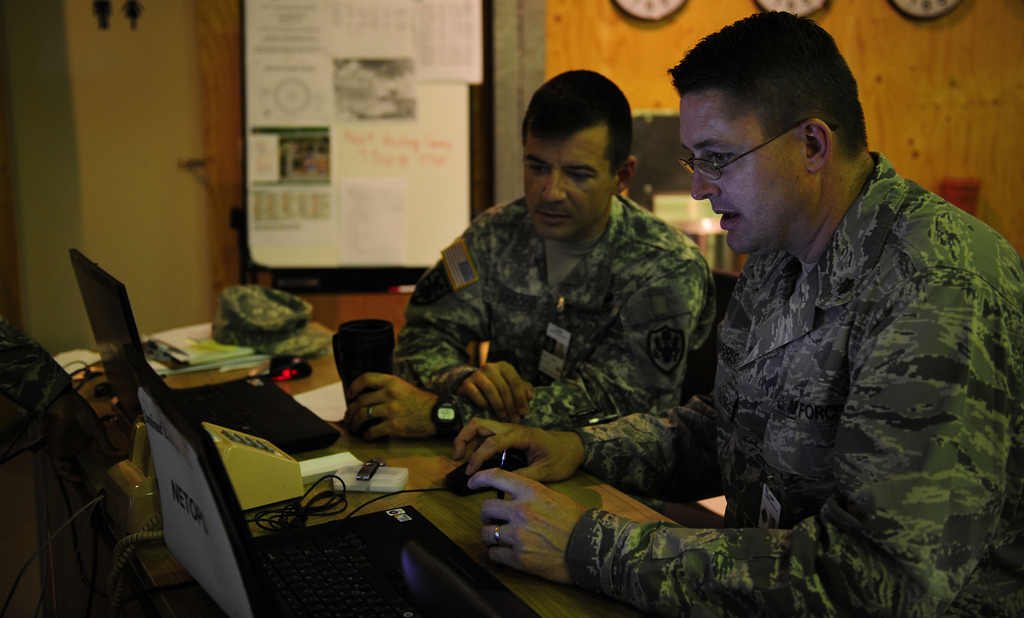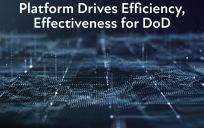This interview is an excerpt from GovLoop’s recent guide, The DoD of Tomorrow, which explores how the department is transforming its operations, technology, workforce, and acquisitions process to confront 21st century challenges.
Over the years, organizations often acquire numerous applications with the objective of improving operational efficiency. However, when those same applications then become obsolete or duplicative, they are not always removed, optimized, or even accounted for. This can reduce efficiency and force organizations to waste resources on technology with little to no operational value.
The Department of Defense is no exception to this issue. But there is a solution. Application rationalization can address this challenge and improve efficiency. To learn more about application rationalization, especially as it relates to DoD, we spoke with Sean Applegate of Riverbed Technology, a leader in application performance infrastructure.
Identifying and Consolidating Applications
Application rationalization is the process of identifying applications across multiple services, finding duplication, and consolidating them to a smaller number of enterprise applications. The process also moves these modernized applications to a more secure, centrally located datacenter.
“If you look at something like a core datacenter, or MilCloud, or FedRAMP-certified cloud, those are common places this new application will be hosted,” said Applegate. “In the long term, this will bring down operational costs and allow continuous improvement.”
The strategy goes beyond just improving efficiency of applications, however. “At a high level, benefits of application rationalization really focus on [applications being] better aligned with the mission itself,” Applegate said.
Rationalizing Effectively
To successfully rationalize applications, Riverbed uses a six-step process:
1) Discover and map out your applications portfolio. It’s important to understand what your applications dependencies are and how they’re currently performing. “We do that very well here at Riverbed, from high level usage, all the way down to the individual transaction level,” said Applegate.
2) Assess the performance of the application and the environment, to determine the business alignment of each application. This can be scoped out using solutions from Riverbed, Applegate noted.
3) Rationalize the application. Examine the performance of current technology and understand potential changes. “By using prediction technologies, we can understand how performance and connectivity will be impacted if an application is moved, prior to actually moving it,” Applegate said. This facilitates strategic planning and impact analysis.
4) Migrate the application. Unexpected barriers may occur, so it is important to monitor the environment during the migration process so problems can be resolved promptly. “At Riverbed, we can provide acceleration solutions that allow us to migrate the data faster from one datacenter to a future datacenter or cloud,” said Applegate.
5) Operate in production. Examine the impact, and determine the degree to which efficiency and effectiveness of processes have been improved.
6) Continuously improve. It is important to understand your environment as it changes, recognizing strengths and room for improvement. What can be optimized? What facilitates a controlled, high-quality experience?
Understanding Benefits and Barriers
“Application rationalization allows us to integrate multiple applications together more easily,” said Applegate. “But it also means moving away from a siloed approach.” This integration ties applications to the mission of the organization and facilitates an effective end-to-end experience for the user.
However, there are some common barriers to application rationalization. And this is not to be taken lightly, as the cost of application failures can range from $500,000 to $1 million per hour per failure, according to Applegate.
For one, agencies may not view their applications from an end-to-end system approach, failing to consider the multitude of stakeholders across the DoD landscape. “If different user scenarios aren’t designed into the application construct very effectively, end-to-end performance suffers, and thus the mission itself suffers,” said Applegate.
Disruption during the migration phase is also common. “There’s typically a lot of dependencies that can cause performance issues and create fragility in the application,” said Applegate. “It’s ideally identified before the migration, but often when you do the migration, other things might be identified that you just weren’t aware of.”
However, when these barriers are overcome, there are significant benefits. Applegate explained how Riverbed freed up about 20 percent of an organization’s computing power and reduced its costs significantly. Core applications were running smoothly on average, but Riverbed found that one older application was consuming a disproportionate amount of resources, slowing down the rest.
“When we fixed that application by replacing it with a newer modern piece, we eliminated the need for about 2,000 CPUs,” said Applegate. “That was a huge cost savings that was hidden in the averages. That’s where detailed application performance management solutions can expose things you don’t normally see.”
In DoD, that can be the difference between a warfighter accessing an operational brief in three to five seconds instead of minutes. “Those are very real savings for the mission,” said Applegate. By speeding up and optimizing applications, mission velocity is improved. And mission performance is what really matters in the long run.
Photo Credit: Flickr/U.S. Department of Defense





Leave a Reply
You must be logged in to post a comment.